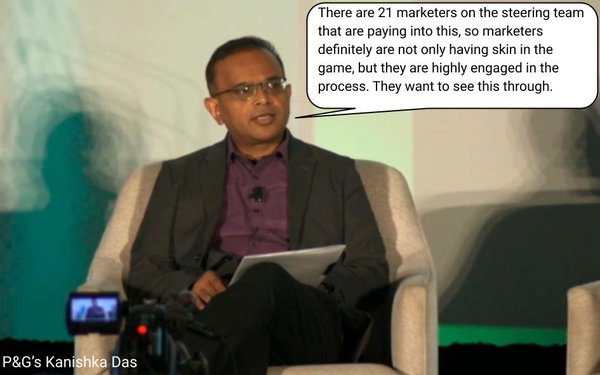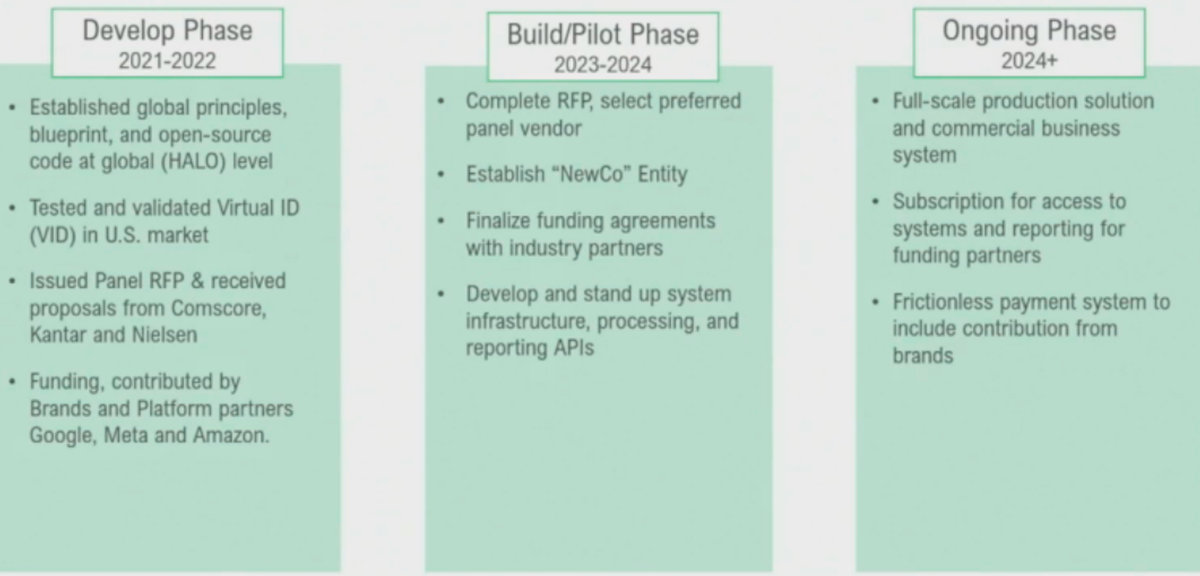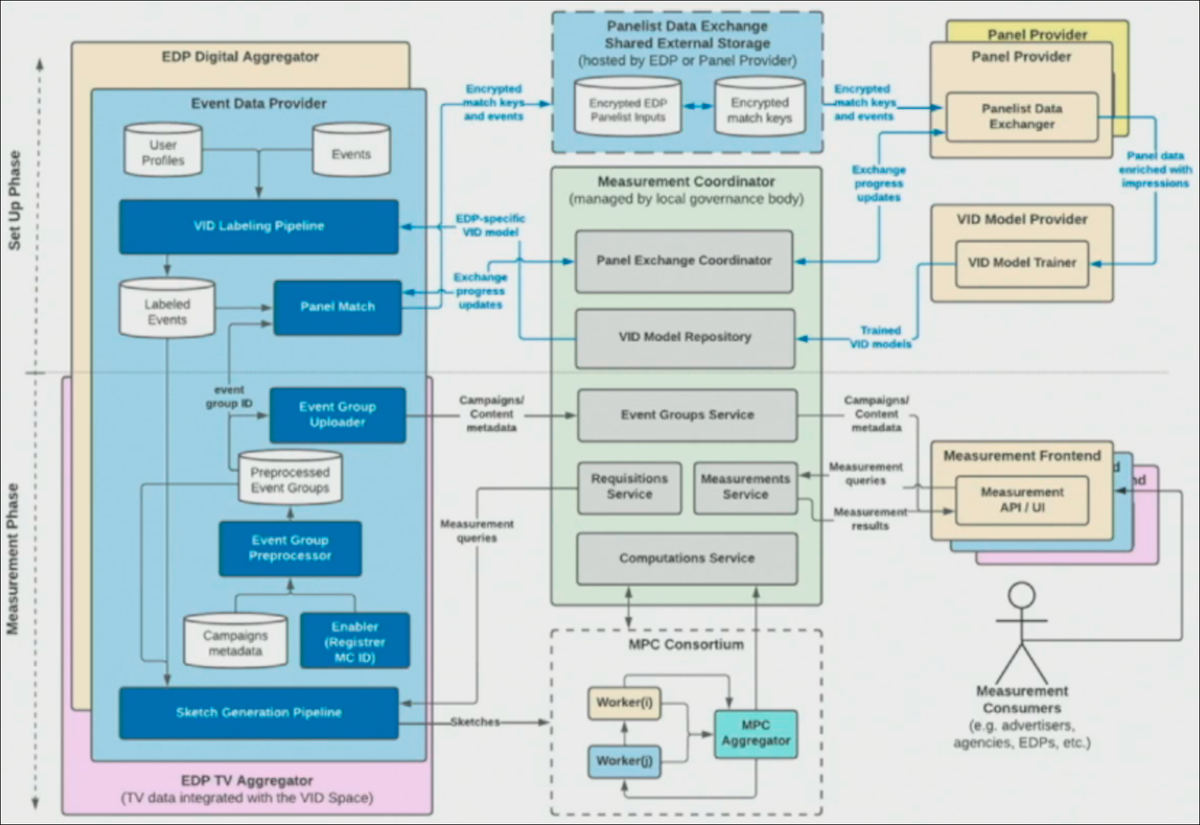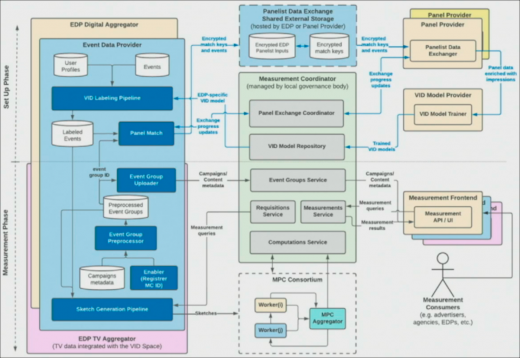ANA: Cross Media Measurement Enters ‘Build Phase,’ Operational Next Year
ANA: Cross Media Measurement Enters ‘Build Phase,’ Operational Next Year

The ad industry’s holy grail pursuit to develop a cross media measurement (CMM) system capable of measuring how often — and how many — consumers are actually reached across digital, linear television, streaming and virtually any other media in the mix is coming one step closer to fruition, a cross-industry task force told attendees this morning during the Association of National Advertisers (ANA) media conference.
“We’re at the build phase right now,” ANA Group Executive Vice President Bill Tucker said, adding that it is mainly about operationalizing and scaling the blueprint CMM steering committee has already signed off on, and getting to the point where a pilot test can be fielded and the industry can start evaluating data.
The build/pilot phase is expected to run into 2024, with the goal of having an operationally deployed system in place sometime that year (see timeline below).
Tucker said the ANA still needs to establish “ongoing funding” of the system, as well as “an entity to manage governance,” but that the blueprint is in place to build it (see diagram at bottom), and the end goal will be a system that provides unduplicated reach and frequency across all media, but enables all industry stakeholders — advertisers, agencies, and media suppliers — to utilize the data inputs they want as part of their business models.
The reason for that is that the core of the system is a “calibration panel” that effectively adjusts for all of the demographic, geographic and other skews inherent in any media-measurement system utilized by the industry based on a calibrated standard.
A key component of that panel is a virtual ID, or what the steering committee calls a VID, that was developed by the Media Rating Council, which has been a strategic advisor to the committee designing the panel and the system it will sit within.
Importantly, the committee said the MRC is not involved in its actual development, because it will play an impartial role in validating it when it comes to market.
“There are 21 marketers today on the ANA steering team that are paying into this, so marketers definitely are not only having skin in the game, but they are highly engaged in the process,” Procter & Gamble Global E-Business Analytics and Insights Director Kanishka Das said, adding: “They want to see this through.”
While the blueprint may look complicated by design, ANA Executive Vice President-Measurement For Marketers, Data & Analytics Jackson Bazley said it also is revolutionary, because it will be the first unified system built from the ground up that is capable of harmonizing all individual media metrics in a way that calibrates for their individual weights and biases to produce unduplicated reach.
That in turn will enable marketers to reduce the waste in their media buys and ad campaigns generated by “excess frequency” that is not only inefficient for marketers, but is annoying to consumers exposed to the same ads over and over again.
“We’re estimating 10% productivity savings over three years,” the ANA’s Tucker said, explaining: “That translates to $50 billion in productivity savings, which is sourced from the elimination of excess waste that unduplicated reach and frequency can provide.”
The system was also designed to be 100% compliant in terms of consumer privacy, and will have the additional benefit of enabling marketers to have more accurate “inputs” for the media-reach data they put into their ROI analyses, including marketing-mix and attribution models.
The the ANA panel made a point that the CMM system is separate from industry initiatives to develop and certify multiple new currencies for estimating the audience impressions of media used as part of advertising and media buys, such as the sell-side initiative to form an industry committee to do that.
According to Video Advertising Bureau Executive Vice President Danielle DeLauro, the CMM system will enable advertisers, agencies and media suppliers to choose whatever “currencies” they want to put in the system in order to analyze their true reach and frequency. The so-called “joint industry committee” being led by OpenAP, various TV network companies, and the VAB, is a parallel effort to help develop and certify currencies that may or may not be used as inputs by marketers utilizing the CMM system.


(14)


